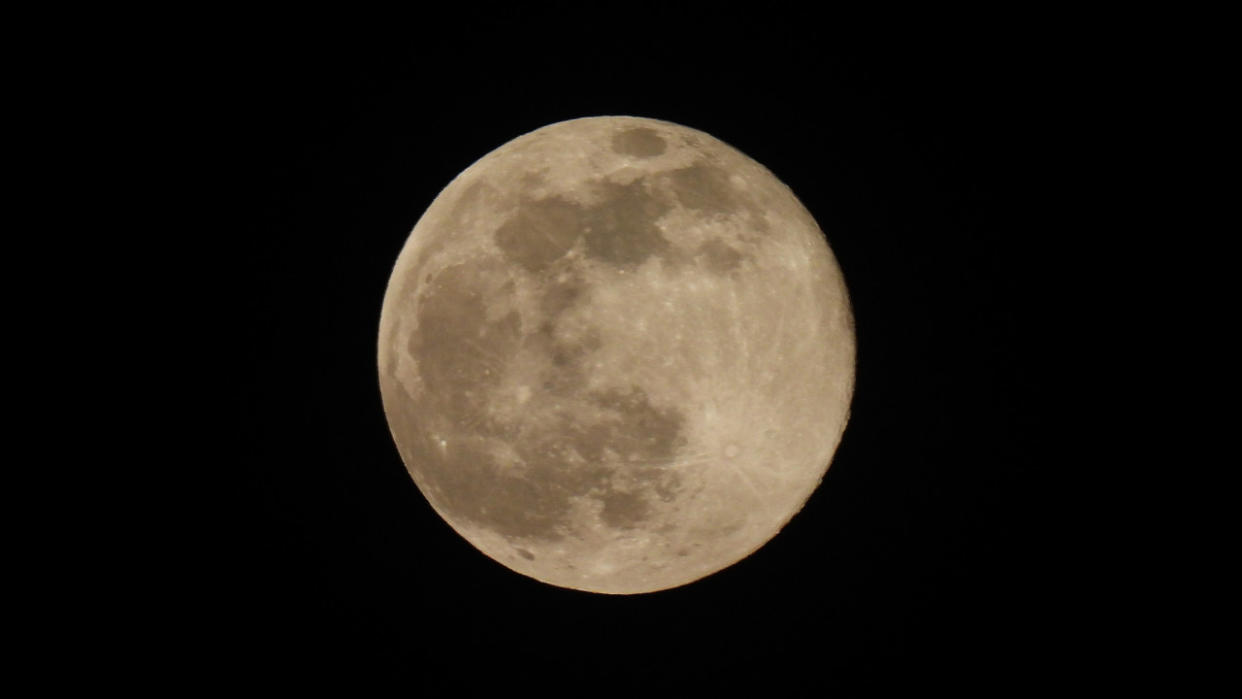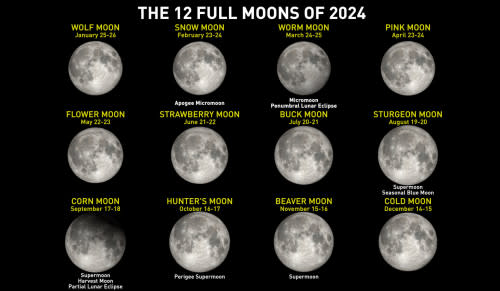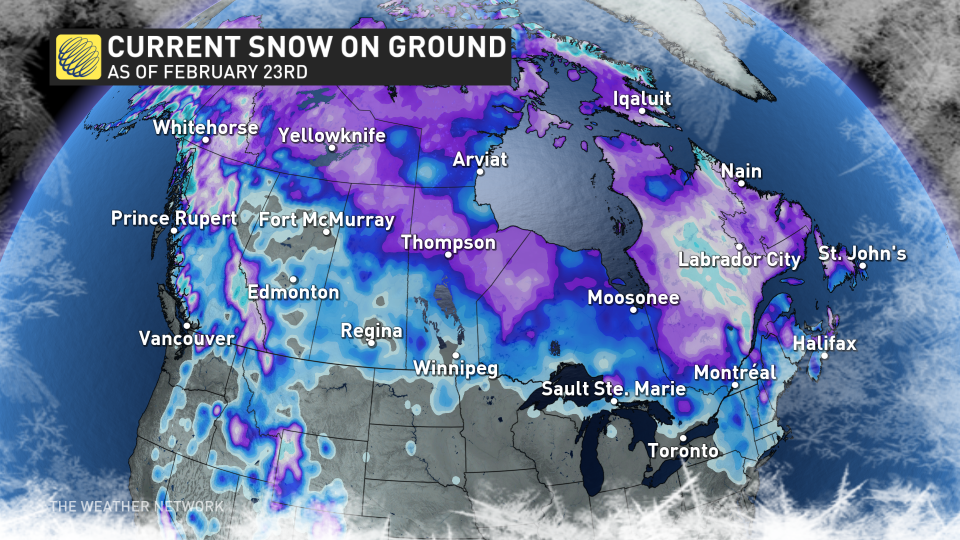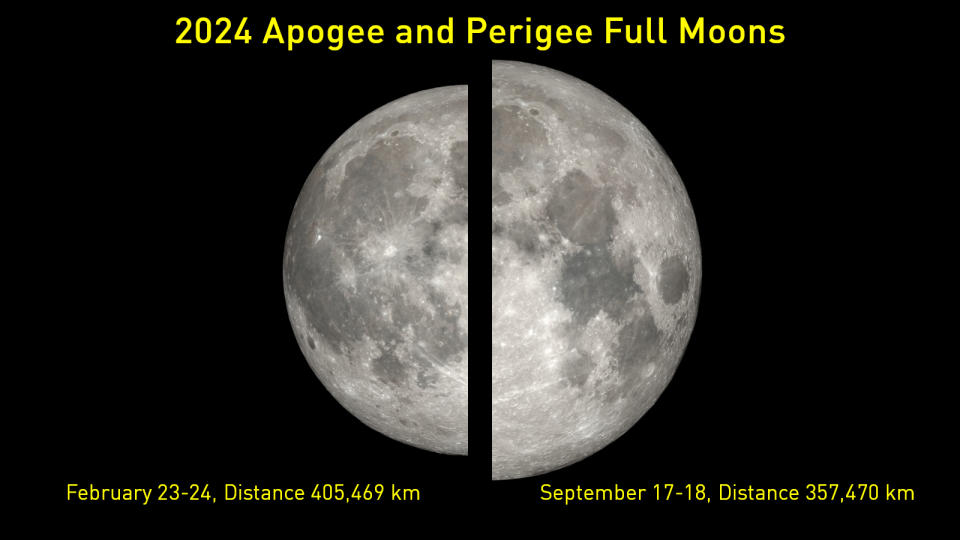Look up tonight to see February's Full Snow Moon

If you have at least reasonably clear skies tonight, take a few moments to go out and see the Full Snow Moon.
The Full Moon will be up all night, from sunset Friday evening through sunrise Saturday morning. Check your local forecast via our website or app to see if your sky conditions are right for viewing the night sky.
What is a Snow Moon?
For roughly a century now, the various Farmer's Almanacs in publication have included a list of names, one for each Full Moon of the year.
According to The Old Farmer's Almanac, the February Full Moon is most commonly called the Snow Moon. Other names include Bear Moon, Eagle Moon, Raccoon Moon, Groundhog Moon, and Hunger Moon.
"February is typically a time of heavy snowfall," the Almanac says.

This graphic collects all the relevant data about each Full Moon of 2024, including their popular names, whether they are a 'super' or 'micro' Moon, a perigee or apogee Full Moon, and whether they are remarkable in some other way (Eclipse, Blue Moon, or Harvest Moon). Credit: NASA's Scientific Visualization Studio/Scott Sutherland
Most Full Moon names are simplifications or loose translations of names taken from the lunar calendars of First Nations peoples.
Some named the February Full Moon after animals, such as the goose (the Haida and the Omaha), the rabbit (the Potawatomi), the crow (the Shawnee), the coyote (the Shoshone), or the black bear (the Tlingit).
There are references to cold (the Lakota and Wishram), ice, or frost (the Algonquin and Arapaho), and sleet (the Comanche).
The Kalapuya of the Pacific Northwest referred to it as "atchiulartadsh" which translates to "out of food" and could be a possible reference for 'Hunger Moon'.
Snow for the Snow Moon?
Does this Full Moon live up to the name Snow Moon?
Here's a map of Canada showing accumulated snowfall as of February 23, 2024.

Southwestern Ontario, Vancouver Island, and the south coast of B.C. are conspicuously snow-free. Parts of Alberta, Saskatchewan, and Manitoba also register as having no snow at this time.
According to Environment and Climate Change Canada, over the past 30 years, January has been the month of the year when most Canadians see the highest snowfall amounts.
"February may not be the month where the most snow falls in a year, but because it comes at the end of the season, and at a time when temperatures for most places average below zero, you probably see more snow on the ground since you've had your best chance to build up snowpack," says Weather Network meteorologist Michael Carter.
Smallest Full Moon of 2024
If this Full Moon seems a bit smaller and dimmer than you expect, it's not your imagination.
On the night of February 23-24, the Moon will be close to its farthest distance from Earth in its elliptical orbit. That makes the Full Moon on that night this year's 'Apogee Micromoon' — the farthest, smallest and dimmest Full Moon of the entire year.

A comparison of the apparent sizes of the February 23-24 Apogee Full Moon and the September 17-18 Perigee Full Moon. Credit: Scott Sutherland/NASA's Scientific Visualization Studio
However, if you're watching the Full Moon just as it's rising or setting, you could be thinking that it actually looks bigger than it should be!
If so, in that case, this actually is your imagination, due to the Moon Illusion!
Thumbnail image courtesy Hazel Clover, who captured this view of the 2023 Full Snow Moon from Thunder Bay, ON.

